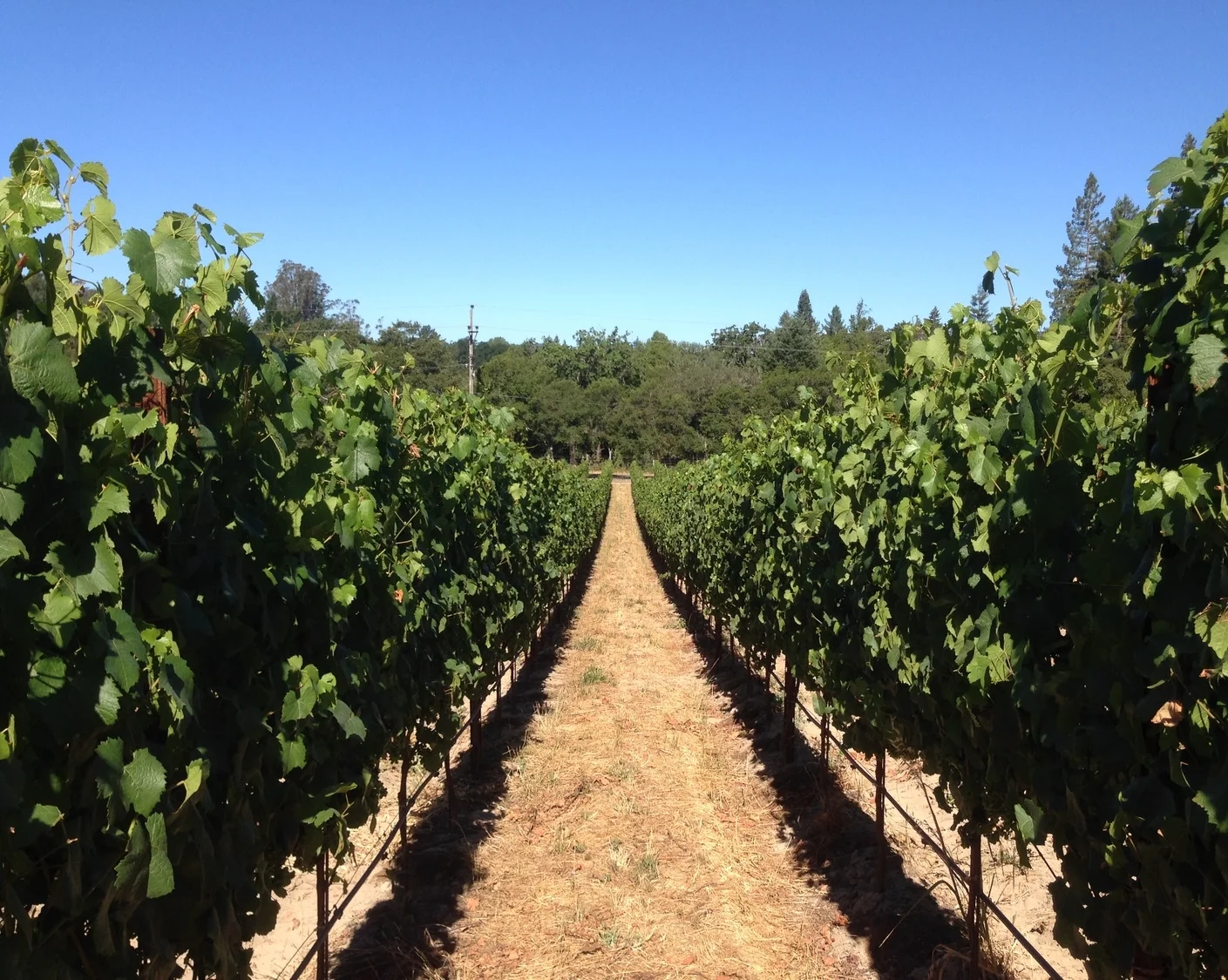Wine is a product of sunlight, air and water. Sunlight powers the engine of vine growth, photosynthesis. But grapes also must receive the right amount of dappled, filtered sunlight on the clusters themselves in order to properly mature. Too little light results in unpleasant vegetative tastes; too much and they will sunburn (yes, grapes sunburn, too, but the only “sunscreen” is the vine canopy). Sunlight also plays a role in the formation of fruitful buds that result in the next year’s crop. Air circulation is important because it allows the clusters to dry after our damp morning fog and keeps mildew and fungi at bay.
Left to its own devices, a grapevine would be happiest climbing up a tree by the side of a river, not struggling in our nutrient- and water-deprived vineyard. However, as one writer observed, “vineyards are not natural systems.” The trellis system exists to channel the vine’s wild growth patterns so that the right amount of sunlight and air can reach the vine and developing grape clusters to produce fruit of the highest quality.
vertical shoot positioning
In our vineyard, we use a vertical shoot positioning (VSP) system in which the vine shoots are trained upwards to form canopy above the fruit. It is a labor-intensive proposition, and thus, more expensive because the shoots need to be positioned on the trellis by hand several times during the growing season. However, it allows for sun penetration and good air circulation, and grape vines grow less vigorously when they grow up (as opposed to down), so the VSP trellis system also serves to further enervate the vines, promoting vine balance and more fruit growth over vegetative growth. Over time, we can customize our VSP system as necessary to add crossbars that allow the foliage to spread a little in order to get the right amount of sun to the grapes below.

